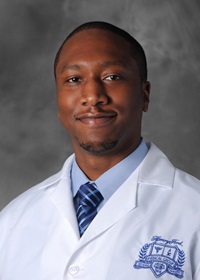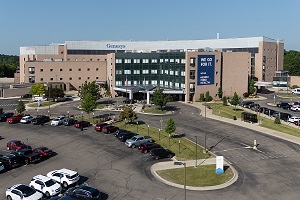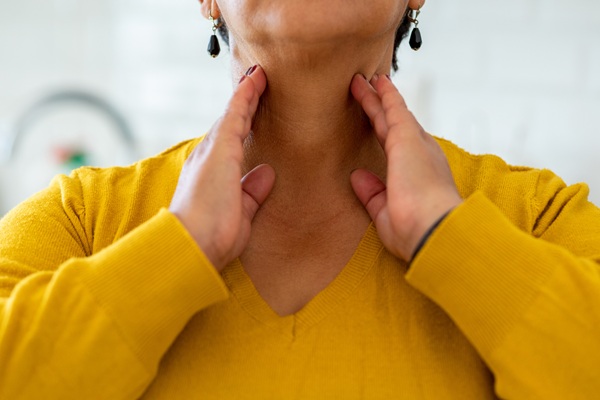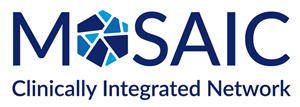Female Athletes in WNBA Don’t Return to Elite Performance for at Least 2 Years After ACL Surgery

DETROIT – (December, 21, 2020) With the Michigan high school and collegiate sports season influx due to the COVID-19 pandemic, a study by Sports Medicine researchers at Henry Ford Health System provides a new perspective on performance levels of female athletes after they return from anterior cruciate ligament (ACL) injury and reconstructive surgery.
The study published in the Orthopaedic Journal of Sports Medicine found that players in the Women’s National Basketball Association didn’t regain their elite performance level for at least two years after injury. That’s about a year longer than players in the National Basketball Association who suffered the same injury. Additionally, WNBA players had significantly lower performance numbers in games played, games started, minutes played, points scored, rebounds, assists and blocked shots during the season in which they returned to play.
The Henry Ford Sports Medicine research team that included Lafi Khalil, M.D., and lead author Joseph Tramer, M.D., noted that the findings are important for both players and coaches to set reasonable expectations for returning , not only at the professional level but also at collegiate and high school levels. Numerous studies have identified many causes that contribute to high rates of ACL injuries in female athletes including differences in lower extremity muscle activation, joint laxity, neuromuscular control, knee anatomy and hormonal factors.

“The data on WNBA players’ ACL tears and reconstruction has been previously studied, but what previous investigations did not evaluate is the performance levels after returning from these injuries,” said Kelechi Okoroha, M.D., sports orthopedic surgeon and the study’s senior author. “The players we studied were back playing after seven months, but the statistical data revealed that they didn’t return to their previous performance numbers on the court until their second or third year back on the court.”
Orthopedic studies confirm that female athletes are 2 to 10 times more likely to sustain an ACL tear than male athletes, depending on the sport. With basketball players, females are at 2 to 7 times greater risk.
The ACL is an important ligament in stabilizing the knee and many professional athletes’ season have come to a sudden end thanks to this very common injury. In the U.S., approximately between 100,00 and 200,000 ACL ruptures occur annually. ACL reconstructions are among the most common sports medicine procedures performed, numbering about 100,000 each year.
In this retrospective study, researchers evaluated ACL injuries in 59 WNBA players from 1997-2018 and their impact on their return to sport and performance level. Data was collected for each player before and after injury to assess changes in playing time and statistical performance. Players who returned to play after ACL reconstruction were compared with their uninjured counterparts.
Key performance findings on average in the first year after surgery:
- Games played decreased from 69.6 to 57
- Minutes played decreased from 23.4 to 18.4
- Points per game decreased from 10.2 to 6.5
Dr. Okoroha has led similar respective performance studies of NBA, NFL and MLB male athletes and thinks this research of female athletes is important in comparing the information and accurately counseling athletes returning from ACL injury.
“In comparison, the WNBA players returned to competition at a lower rate (69.5%) than NBA players with similar injuries (88.9%) and their performance numbers were measuredly lower once they returned,” said Dr. Okoroha.
As a former college basketball player and team captain at Xavier University of Louisiana, Dr. Okoroha also brings a player’s perspective on the implications of ACL injuries, “Some of my teammates suffered ACL ruptures. These are devastating injuries that not only impact a player’s morale and outlook but also require a great deal of mental and physical work to return to previous performance levels,” said Dr. Okoroha.
###
About Henry Ford Health System
Founded in 1915 by Henry Ford himself, Henry Ford Health System is a non-profit, integrated health system committed to improving people’s lives through excellence in the science and art of healthcare and healing. Henry Ford Health System includes six hospitals including Henry Ford Hospital in Detroit; Henry Ford Macomb Hospitals; Henry Ford Wyandotte Hospital; Henry Ford West Bloomfield Hospital; Henry Ford Allegiance in Jackson, MI; and Henry Ford Kingswood Hospital – an inpatient psychiatric hospital.
Henry Ford Health System also includes Henry Ford Medical Group: Henry Ford Physician Network; more than 250 outpatient facilities; Henry Ford Pharmacy; Henry Ford OptimEyes; and other healthcare services. Our not-for-profit health plan, Health Alliance Plan – HAP – provides health coverage for more than 540,000 people.
As one of the nation’s leading academic medical centers, Henry Ford Health System trains more than 3,000 medical students, residents, and fellows annually in more than 50 accredited programs, and has trained nearly 40% of the state’s physicians. Our dedication to education and research is supported by nearly $100 million in annual grants from the National Institutes of Health and other public and private foundations.
Henry Ford Health System employs more than 33,000 people, including more than 1,600 physicians, more than 6,600 nurses and 5,000 allied health professionals. For more information, go to henryford.com.
###
MEDIA CONTACT: Sal Giacona / sgiacon1@hfhs.org / 313-421-9108
.svg?iar=0&hash=F6049510E33E4E6D8196C26CCC0A64A4)

/hfh-logo-main--white.svg?iar=0&hash=ED491CBFADFB7670FAE94559C98D7798)







